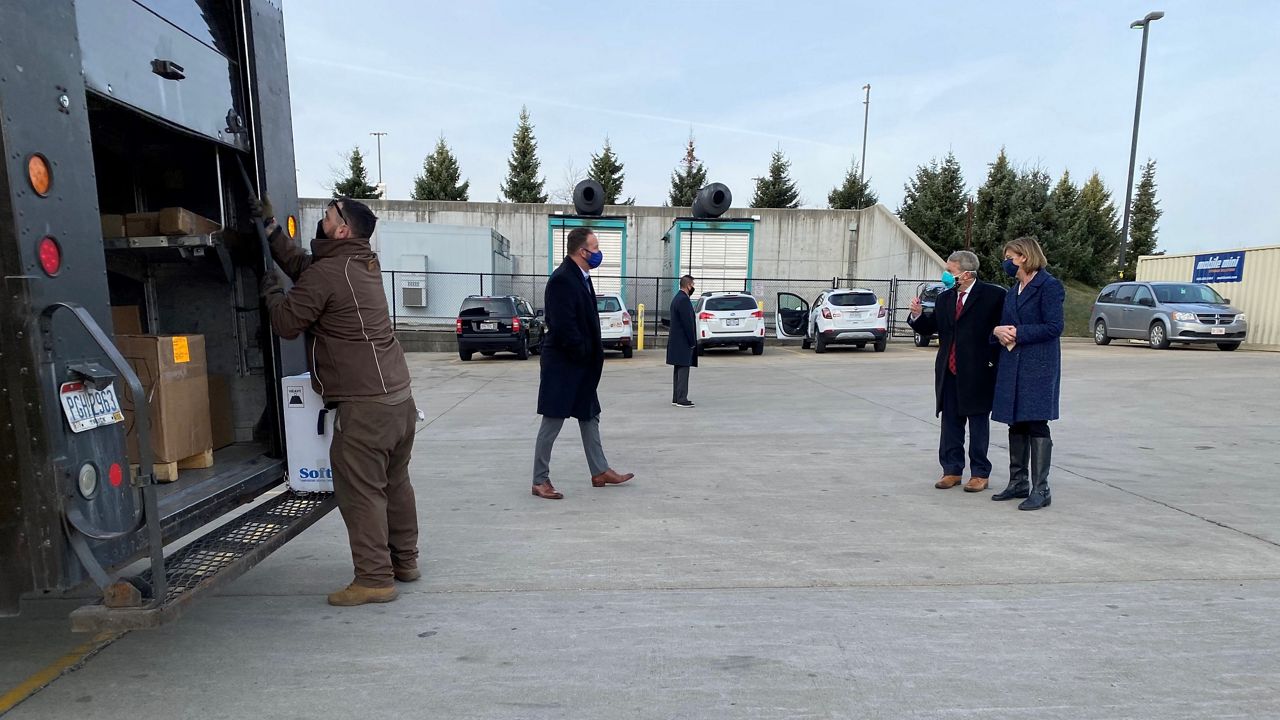COLUMBUS, Ohio — Gov. Mike DeWine announced a bold plan Wednesday to offer schools that commit to offering in-person learning the chance to vaccinate every adult employee at the school in the next tier of COVID-19 vaccine distribution.
The governor said he hopes schools can begin immunizations in mid-January, and he hopes every school that wants to open in-person can do that by March 1.
Schools that remain in virtual learning will not be afforded this opportunity, creating major decisions for superintendents in the coming weeks. Getting children back in school is a top priority for the governor, but the task is complicated by the fact that Moderna’s vaccine is currently only for those 18 and up and Pfizer’s for individuals 16 and older.
“We’re going to offer vaccines to all schools that want to go back or remain in-person,” DeWine said. “I believe it's time to get all our children, who want to be in class, back in class,” DeWine said.
The news came as the governor announced the state’s new vaccine priority groups, which will put adults older than 65, a “very small group” of people younger than 65 with medical conditions, and the school employees next in line for the vaccine.
It was not clear how the state’s new vaccine priority groups will align with federal vaccine distribution tiers, which are not finalized but as of the latest recommendation could prioritize adults older than 75 years old ahead of some essential workers. Federal plans do not prioritize teachers front-of-line in the same way as Ohio' plan.
The announcement Wednesday of modified vaccine tiers reflect a shifting approach nationally to focus on the medically vulnerable, putting seniors and those with certain conditions ahead of many non-healthcare essential workers.
In Ohio, an “astounding” 87 percent of all COVID-19 deaths have been among the 65 and up age group, DeWine said. That population is about 1.8 million people. DeWine said the state must also prioritize people younger than 65 “with severe inherited or developmental disorders,” like Sickle Cell Disease and Down Syndrome.
The number of school employees in the priority group will depend on how many schools stay in remote learning models.
“These children are obviously our future. These children are Ohio's future. We must invest in our future. We must invest in our children,” DeWine said.
The latest data shows that 45% of Ohio’s schools are in fully remote-learning models. The governor noted that many of these schools scaled back their learning models due to mounting staff quarantines and the lack of available bus drivers and substitute teachers. Offering the vaccine to all the adults in a school will help schools open and remain open, DeWine said.
Ohio reported 7,790 cases Wednesday, 109 deaths, and 431 hospitalizations. There were 4,694 hospitalized COVID-19 patients, 1,131 patients in ICU beds, and 708 people on ventilators.
DeWine said he is encouraged case numbers are plateauing, or have come down a bit from the peak above an average of 10,000 per day.
“We’re seeing a leveling off the cases but we're seeing obviously later indicators, which is the deaths and the hospital admissions as well as the ICU admissions,” DeWine said.
The latest December vaccine projections for doses arriving in Ohio are 529,900 doses, 271,000 from Moderna and 258,000 from Pfizer, an Ohio Department of Health spokesperson said Wednesday.
As of the latest update, 11,700 people in Ohio have been vaccinated. The governor’s briefing Wednesday featured several Ohioans on the frontline receiving vaccine shots, including Chris Chilton, a paramedic and firefighter from Springfield Fire and Rescue.
“If anybody knows me I'm a champion for the city of Springfield, but specifically in this instance, I'd like to be a champion for the Black community,” Chilton said. “I understand the history of vaccines within our community specifically.”
Chilton says he has an aunt currently on a ventilator, and he said, as a 40-year-old Black man “who's a little overweight” he has “selfish reason” for wanting the vaccine, being at an elevated risk.
“I’d like to do my part to get us back to close to normal if I can,” Chilton said.
The Ohio Department of Health’s Chief Medical Officer Bruce Vanderhoff issued a warning in advance of the Christmas holiday.
“We're heading into Christmas riding our highest wave of COVID-19 ever. Our cases are high, our hospitals are extremely busy, and that's in every corner of the state. Simply put, we can't afford to let this get worse,” he said.



